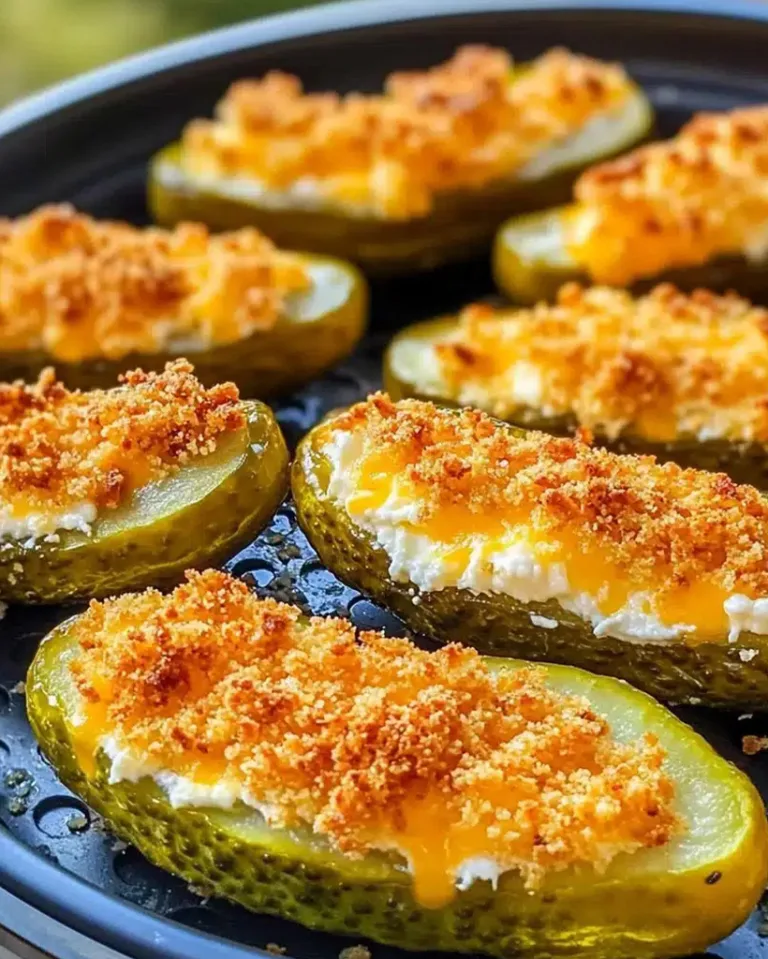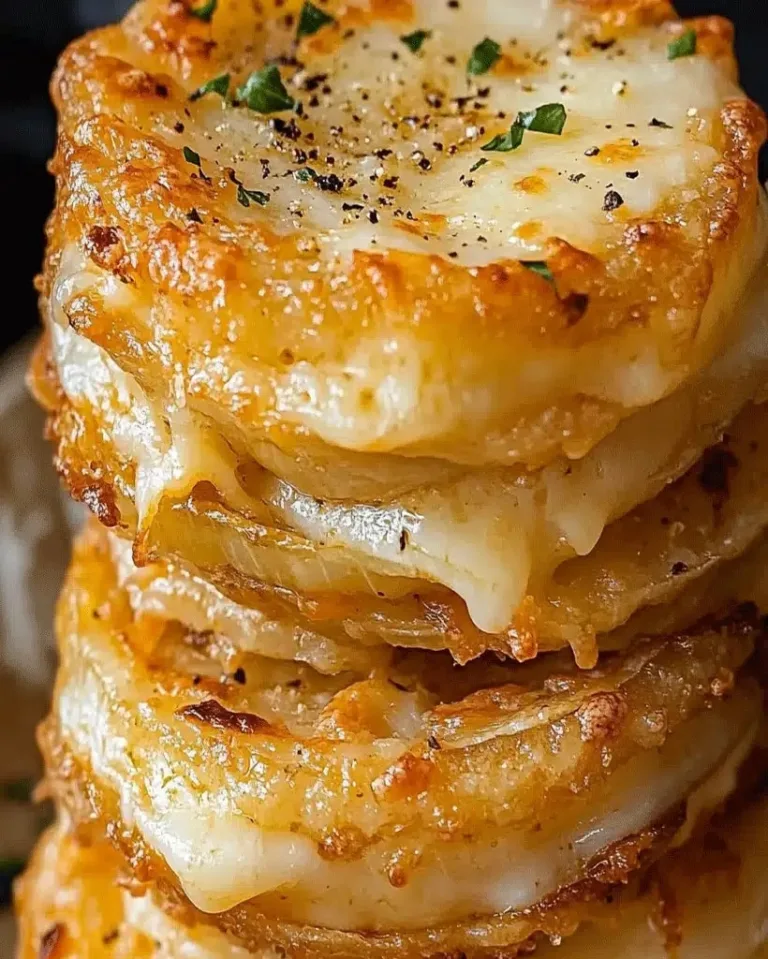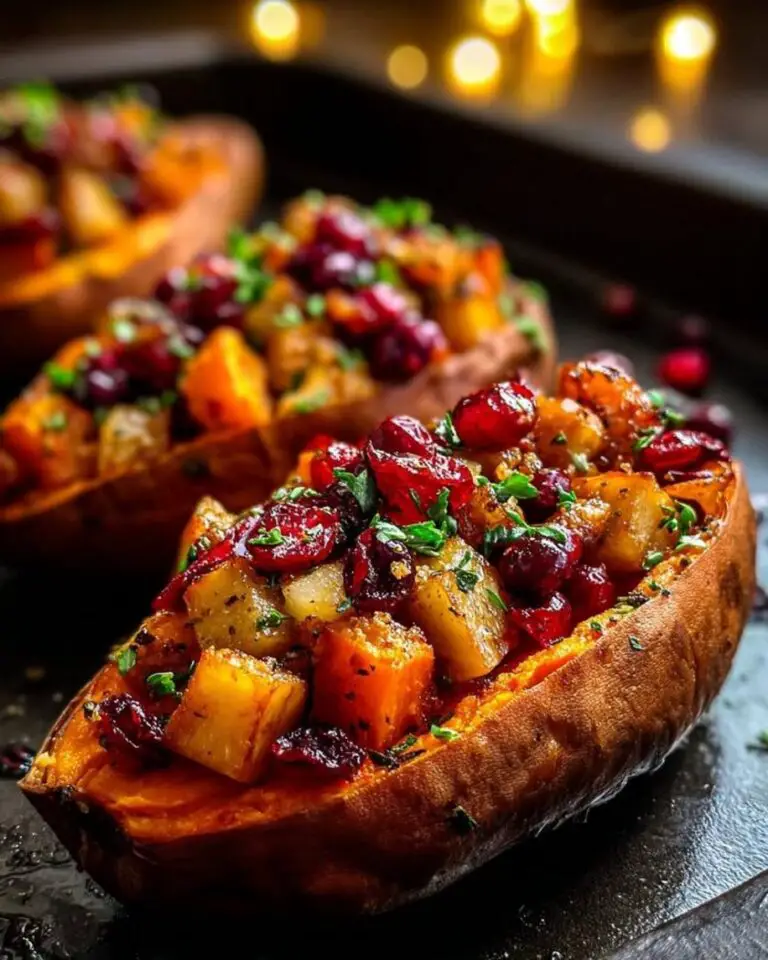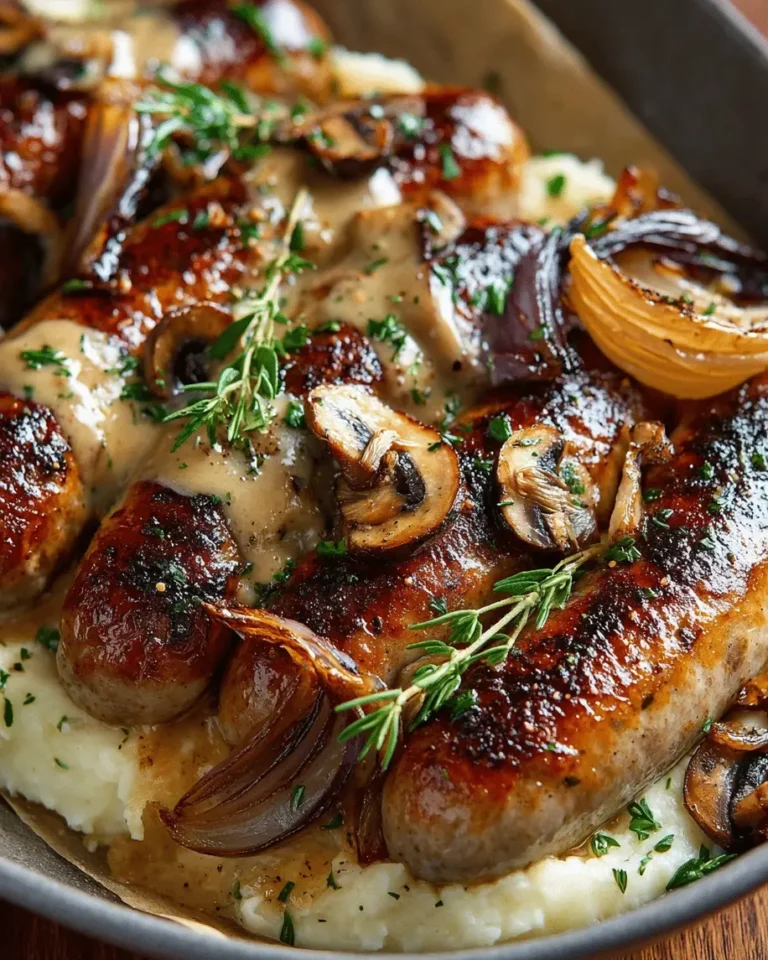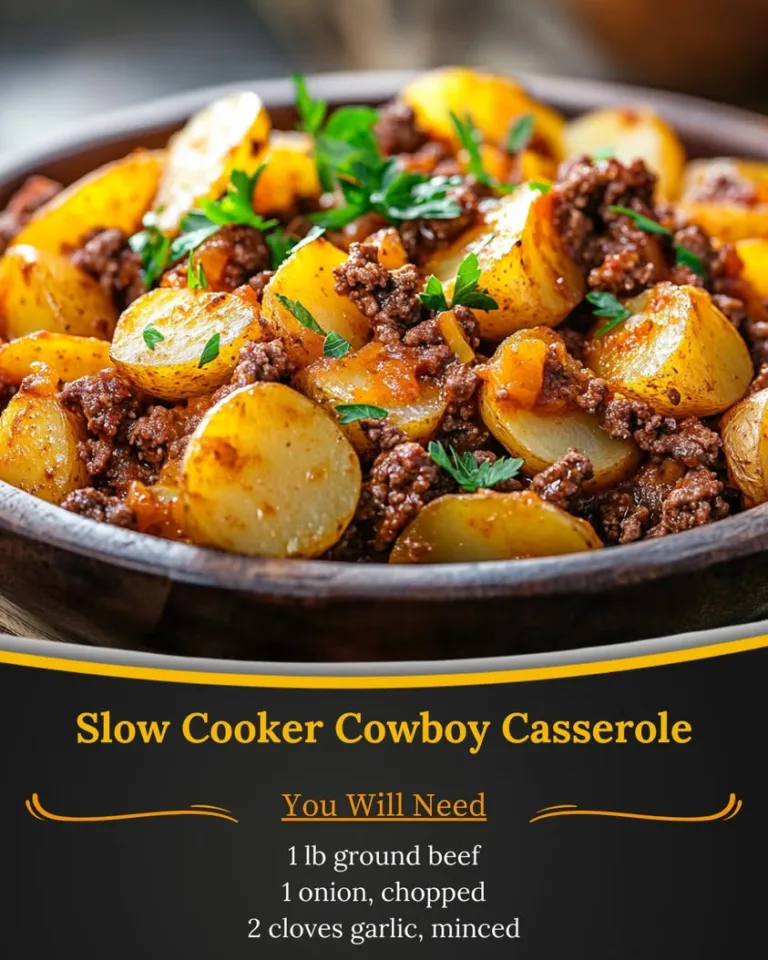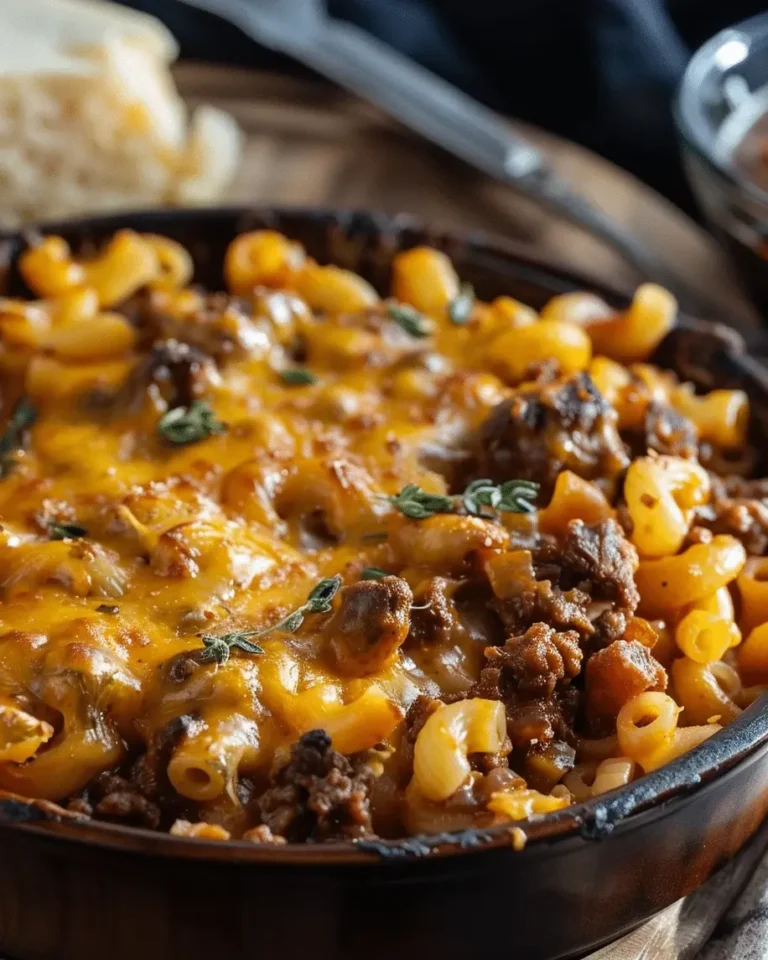Easy Thai Yellow Curry Recipe – Creamy & Ready in 30 Minutes
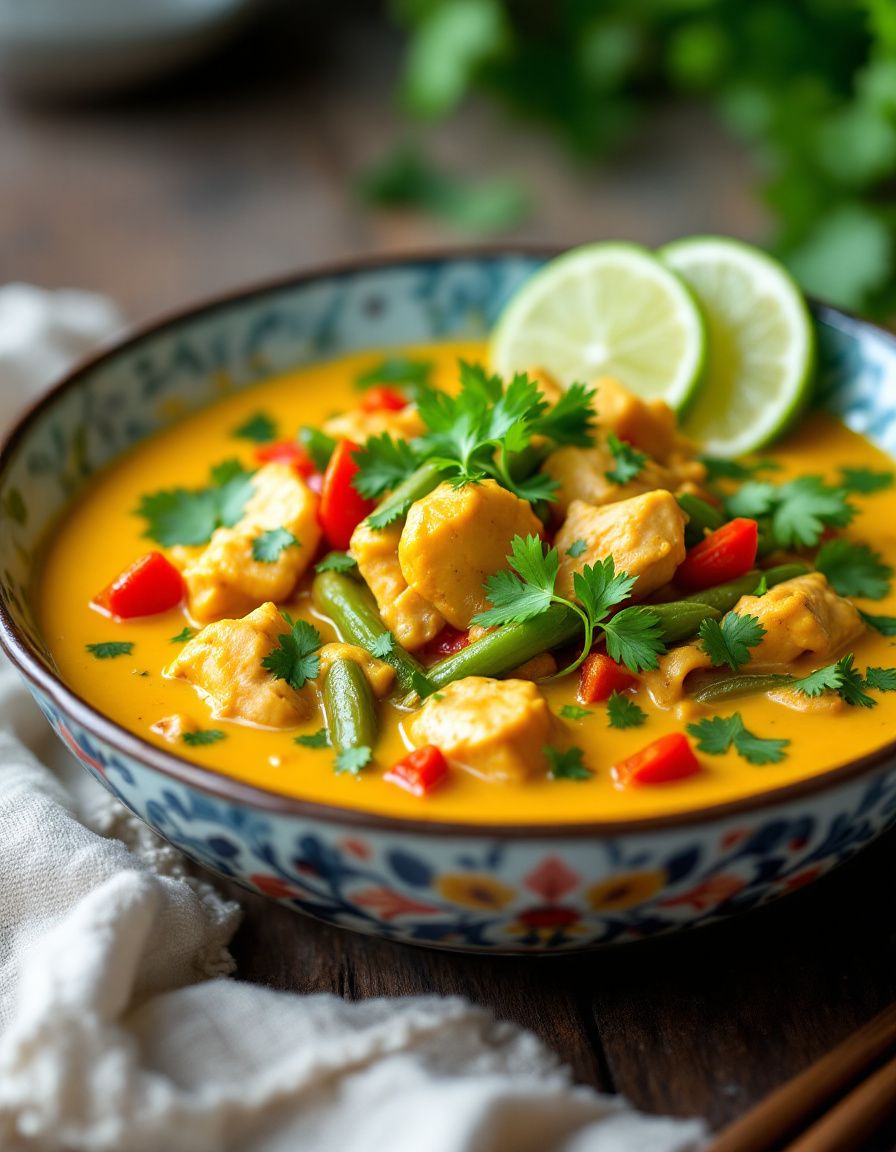
Thai Yellow Curry Recipe – Easy, Creamy & Ready in 30 Min! 🍛
Thai yellow curry is a delightful dish that brings the vibrant flavors of Thailand straight to your kitchen. This recipe captures the essence of aromatic yellow curry paste, enriched by creamy coconut milk and a medley of fresh vegetables. In just 30 minutes, your home will be filled with an enticing fragrance that invites everyone to the table. The balance of savory spices and sweet undertones creates a harmony in every bite, making this dish a favorite for all curry lovers.
The beauty of this Thai yellow curry lies not only in its rich flavors but also in its versatility. Perfectly suited for busy weeknights, this recipe makes it easy to enjoy a home-cooked meal without sacrificing taste or quality. Whether served with steaming jasmine rice or enjoyed on its own, this curry offers a satisfying experience that warms the heart and pleases the palate. Let’s dive into the delightful elements that make this dish a must-try!
Quick Recipe Highlights
- Flavor Profile: The combination of turmeric, lemongrass, and coconut milk creates a unique flavor that is both spicy and creamy.
- Texture: The dish boasts a wonderful contrast between the smoothness of coconut milk and the tender-crisp vegetables.
- Aroma: Expect a warm and inviting aroma from the spices, which transports you to the bustling streets of Thailand.
- Visual Appeal: Vibrant yellows and greens of the curry and vegetables create a feast for the eyes.
- Skill Level Needed: Simple enough for beginners, this recipe requires minimal culinary expertise.
- Special Equipment: A sharp knife and a sauté pan or wok are all you need to get started.
Recipe Overview
- Difficulty Level: With straightforward steps and minimal ingredients, this easy recipe is perfect for home cooks of all skill levels.
- Category: Ideal for weeknight dinners or meal prep, this dish falls under the main course category.
- Cuisine: Influenced by traditional Thai flavors, this recipe embraces the heart of Southeast Asian culinary traditions.
- Cost: Inexpensive to make, most ingredients are accessible and budget-friendly.
- Season: Enjoy year-round, but it shines in the cooler months with its warming spices.
- Occasion: Perfect for family gatherings, casual dinners, or even entertaining guests.
Why You’ll Love This Recipe
The taste and texture of this Thai yellow curry are simply irresistible. The combination of creamy coconut milk with the earthy spices creates a well-rounded flavor profile that excites the palate. Each ingredient complements the others, resulting in a dish that feels both indulgent and comforting. The crisp vegetables add a delightful crunch, while the tender pieces of protein—be it chicken, tofu, or shrimp—make every bite a satisfying experience.
In addition to the incredible taste, the convenience of this recipe makes it a winner. With a total preparation and cooking time of just 30 minutes, busy cooks can whip up a delicious dinner without having to spend hours in the kitchen. This practicality means fewer dishes to wash and more time to enjoy with family. You can also easily customize the curry to suit your preferences, enhancing its appeal.
Nutritionally, Thai yellow curry offers numerous health benefits. It’s packed with vitamins and minerals from the fresh vegetables, while the inclusion of protein provides a well-balanced meal. The use of coconut milk contributes healthy fats that promote overall well-being. Each bowl comes with a comforting dose of nutrients, making it a guilt-free indulgence.
Moreover, serving this dish brings delight and warmth to your table, making it an excellent choice for social gatherings. Whether you’re having friends over for dinner or celebrating a family occasion, this curry adds a touch of exotic flavor that will impress your guests. Its beautiful presentation and vibrant colors invigorate any dining setup, making it a stress-free crowd-pleaser.
Lastly, the cost-effectiveness of this recipe cannot be overlooked. Using simple, readily available ingredients means that you can enjoy restaurant-quality cuisine at home without breaking the bank. This accessibility opens up culinary experiences to every cook, allowing you to explore the delightful world of Thai cooking on a budget.
Historical Background and Cultural Significance
Thai yellow curry has a rich history woven into the tapestry of Southeast Asian cuisine. Using yellow curry paste, which is often made from turmeric, lemongrass, and other spices, this dish has become a staple in Thai cooking. Traditionally, curries in Thailand are made with a variety of fresh ingredients, reflecting the abundance of local produce available throughout the year.
The cultural significance of Thai yellow curry is evident in its versatility. This dish represents the communal nature of Thai dining, where meals are shared and enjoyed together at the table. In Thai culture, food is not just sustenance; it’s a means of bringing people together and fostering connections.
Over the years, the recipe has evolved, with each region adapting it to their local ingredients and tastes. For instance, in southern Thailand, the use of coconut milk is prominent, while northern variations may emphasize the use of herbs. This regional diversity showcases the adaptability and creativity inherent in Thai cuisine.
Different variations of Thai yellow curry can be found, each possessing its unique twist. From the addition of different proteins like beef or seafood to the inclusion of seasonal vegetables, every family might have their secret version. This recipe encapsulates the heart of Thai culinary tradition while allowing for personal adaptations.
Ingredient Deep Dive
**Turmeric:** An essential spice in the yellow curry, turmeric not only imparts its distinctive yellow color but also offers numerous health benefits, including anti-inflammatory properties. When purchasing turmeric powder, look for a vibrant hue to ensure freshness. Store it in an airtight container in a cool, dark place to preserve its potency.
**Coconut Milk:** Creamy and rich, coconut milk is the foundation of this dish, balancing out the spices while adding a delicious creamy texture. When selecting coconut milk, opt for brands that use only coconut and water to avoid additives. Store opened cans in the refrigerator and use within a few days, or freeze for longer storage.
Common Mistakes to Avoid
- Using low-quality curry paste can lead to a bland flavor. Always opt for authentic Thai curry paste for the best results.
- Overcooking vegetables may result in mushy textures. Add them at the right time to maintain their crunch.
- Not adjusting the spice levels to taste can overpower or underwhelming the dish’s flavor. Always taste as you go.
- Using too much coconut milk can make the curry overly rich. Stick to the recommended amounts for a balanced flavor.
- Not simmering long enough can prevent the flavors from melding together. Allow the curry to cook for the suggested time.
- Forgetting to preheat your pan or pot can lead to uneven cooking. Always ensure your cooking vessel is hot before adding ingredients.
- Failing to prepare your ingredients ahead of time can lead to a chaotic cooking experience. Have everything chopped and measured before you start.
- Ignoring the garnish can detract from the overall presentation. Fresh herbs and lime add brightness and flavor.
Essential Techniques
**Sautéing:** This foundational technique is crucial as it builds the flavor base for the curry. Start with a hot pan and add oil before introducing the curry paste, allowing it to release its aromatic oils. Stir continuously to avoid burning and enhance the flavors. Overheating can lead to the paste sticking or getting bitter, so keep an eye on it.
**Simmering:** Once all ingredients are added, simmering is vital for melding the flavors. A gentle simmer allows the curry to develop depth, so keep the heat low and let it bubble softly. This step also helps vegetables cook through without losing their texture. Remember to stir occasionally to avoid sticking.
Pro Tips for Perfect Thai Yellow Curry
Use fresh produce for the best flavor and texture—frozen or canned vegetables may not provide the same quality.
Experiment with protein options; shrimp, chicken, and tofu are all excellent choices that change the dish’s character.
Taste as you cook; this allows for adjustments and ensures the flavors balance perfectly.
Garnishing with fresh herbs and a squeeze of lime enhances the dish’s presentation and flavor.
Pair with jasmine rice to soak up the delicious sauce for a more satisfying meal.
Store leftover curry properly to maintain its taste and texture for future meals.
Make sure to use a non-stick pan to prevent sticking and burning, which can ruin the curry.
Allow the curry to rest for a short time after cooking; this helps the flavors meld even further.
Variations and Adaptations
Thai yellow curry can be easily adapted to your taste preferences. In regions where coconut is less prevalent, you might find cream or yogurt substitutes for a different texture while still maintaining creaminess. For seasonal adaptations, consider using fresh vegetables that are in season to support local farmers and enjoy peak flavors.
Vegetarians and vegans can substitute the protein with mushrooms, chickpeas, or lentils, providing a hearty alternative without sacrificing taste. If you crave a lighter version, you can reduce the amount of coconut milk or use light coconut milk to decrease the calorie count without losing the essence of this dish.
Feel free to experiment with other spices or herbs to alter the flavor profile; adding a pinch of chili or a spoonful of peanut butter can customize it to your liking. Play around with presentation by serving it in unique bowls or garnishing differently, offering a modern twist on this traditional dish.
Serving and Presentation Guide
Plating your Thai yellow curry elegantly can elevate the dining experience. Use shallow bowls for a modern look, and pile the curry high in the center. Consider drizzling a light coconut milk swirl on top for added visual appeal. Fresh herbs, such as cilantro or basil, offer a burst of color and enhance aroma when garnished atop the dish.
Traditional accompaniments, such as jasmine rice or rice noodles, can be creatively presented on the side or even beneath the curry for a beautiful contrast. For a contemporary touch, add a side of pickled vegetables to provide a crunchy, tangy contrast to the creamy curry.
Temperature matters; serve the curry steaming hot to enhance flavor. For portion control, consider using small side plates for individual servings, allowing guests to enjoy multiple dishes during a meal.
Wine and Beverage Pairing
When it comes to pairing drinks with Thai yellow curry, a light, fruity white wine like Riesling or Sauvignon Blanc enhances the dish’s flavors without overpowering them. For a non-alcoholic option, a sparkling water with a slice of lime provides a refreshing balance to the richness of the curry.
If you’re a tea lover, consider serving the curry alongside a lightly brewed jasmine tea, which complements the aromatic profile of the dish. Ensure your drinks are chilled before serving to maintain the best experience.
Storage and Shelf Life
Proper storage extends the life of your delicious Thai yellow curry. For leftovers, transfer the cooled curry to an airtight container and refrigerate, where it can last for up to three days. Always label your containers with dates to monitor freshness.
If you’re looking to freeze the curry, ensure it’s cooled fully before transferring it to freezer-safe bowls or bags. Properly stored, it can last for up to three months. When reheating, transfer it to a pot and warm it gently, adding a splash of water or coconut milk if needed.
Watch for signs of spoilage, such as unusual odors, changes in texture, or growth. If you suspect spoiled food, it’s always best to err on the side of caution and discard it to prioritize health.
Make Ahead Strategies
Planning to prepare your Thai yellow curry ahead of time can save you valuable moments in the kitchen. Pre-chop your vegetables and store them in airtight bags, so they’re ready when you are. Alternatively, prepare the curry sauce without the protein or vegetables a day in advance, allowing the flavors to meld overnight.
Keeping the protein separate until you’re ready to cook ensures it stays fresh. Just remember, freshly prepared elements maintain the best taste and texture. When it’s time to cook, reheat the sauce, add the protein and vegetables, and simmer until everything is cooked through, preserving the bright colors and flavors.
If you want to include fresh herbs or a squeeze of lime, add those just before serving to keep their vibrant flavor intact. This preparation method maximizes efficiency while ensuring a delightful meal in a pinch.
Scaling Instructions
For those looking to adjust the serving size of the Thai yellow curry, halving the recipe is as easy as cutting the quantity of each ingredient in half. Be mindful of cooking times; reducing the amounts might require less time to simmer.
Doubling or tripling the recipe is just as straightforward, and consider using larger pots for this. Just keep in mind that cooking times might slightly increase as the volume of the dish grows—keep an eye on the texture and taste throughout the process.
Storage is vital; ensure your containers can accommodate the extra portions and always label them. With some foresight, you can have delicious meals ready for days on end!
Nutritional Deep Dive
Diving into the nutritional aspects of Thai yellow curry reveals its healthful benefits. With a perfect balance of macronutrients, this dish provides essential carbohydrates from the vegetables and jasmine rice, along with protein from your choice of meat or plant-based options.
Micronutrient analysis showcases a wealth of vitamins and minerals, especially vitamins A and C from fresh vegetables. The presence of turmeric adds antioxidant properties while promoting overall health. Understanding these components helps you appreciate what goes into your meals.
For those conscious of dietary concerns, this curry lends itself to various health goals. Whether you’re aiming for weight management or higher nutrient intake, you can adjust portions to meet your preferences.
Just remember, while this dish offers several health benefits, controlling portions ensures you enjoy it as a part of a balanced diet without going overboard on calories.
Dietary Adaptations
Thai yellow curry can easily adapt to meet various dietary needs. For gluten-free diets, simply ensure that your curry paste and sauces do not contain wheat, allowing everyone to enjoy this delicious dish worry-free.
Dairy-free individuals can feel confident in using creamy coconut milk as a replacement for traditional dairy products, creating a rich and satisfying flavor. Vegans can opt for vegetable broth instead of chicken and use tofu for protein, ensuring a hearty option without animal products.
Low-carb and keto diets can be accommodated by swapping out rice for cauliflower rice, providing a similar texture without the carbs. Paleo followers can enjoy the dish by sticking to whole ingredients and avoiding processed items.
For those on specific programs like low-FODMAP, be mindful of ingredient selection, using permitted items to create a comforting yet compliant dish. This versatility makes Thai yellow curry an inclusive meal option.
Troubleshooting Guide
Several common issues can arise while preparing Thai yellow curry. If your curry seems too oily, consider reducing the amount of curry paste or coconut milk next time, ensuring balances in flavor and richness.
Sometimes, a curry can be too spicy; you can counteract this by adding a teaspoon of sugar or an extra can of coconut milk, softening the heat without losing flavor entirely.
If the texture is too watery, simmering longer will help cook off excess liquid. Always check your spices to ensure there aren’t any missed ingredients that would have contributed to thickening the sauce.
If using leftovers, sometimes it can taste flat. Enhance flavors by adding fresh herbs or a squeeze of lime juice just before serving to refresh the dish.
Taking note of common pitfalls can help bridge the gap between cooking and enjoying a perfect Thai yellow curry!
Recipe Success Stories
Feedback from the community reveals love for this Thai yellow curry recipe; many have shared their rendition with personal twists, enriching the original flavor. Some have suggested swapping out vegetables seasonally, while others opt for different proteins, further enhancing this beloved dish.
Social media posts filled with vibrant photos of homemade curry demonstrate the creativity of fans who venture to replicate the recipe. Each unique adaptation keeps the essence of this dish alive while adding a personal touch that connects them to Thai cooking.
Additionally, readers often comment on the ease of following the recipe, mentioning how they set time aside for meal prepping all week. These success stories foster a community of cooking enthusiasts, encouraging others to attempt the dish and share their experiences.
Every story exchanged creates a tapestry of culinary connections, showcasing how this simple dish can transcend boundaries and bring people together.
Frequently Asked Questions
Yes, store-bought curry paste is a convenient option. Just ensure it’s a good quality brand for the best flavor.
How do I make this dish spicier?
To increase the heat, add more curry paste or a pinch of chili flakes as you cook. Adjust gradually to control spice levels.
Can I add other vegetables?
Absolutely! Feel free to incorporate vegetables like bell peppers, zucchini, or snap peas as per your preference.
Is this recipe suitable for meal prep?
Yes, the curry stores well and can be reheated, making it perfect for meal prep. It stays fresh for up to three days in the refrigerator.
What can I serve with Thai yellow curry?
Traditional accompaniments include jasmine rice, rice noodles, and fresh herbs to complement the rich flavors of the curry.
Can I freeze the leftovers?
Yes, store leftovers in airtight containers and freeze them for up to three months for easy future meals.
How do I reheat the curry?
Reheat on the stovetop over medium heat, stirring gently, or in the microwave until piping hot.
Can I use coconut cream instead of coconut milk?
Yes! Using coconut cream will create an even richer curry, with a different texture.
How do I balance the flavors?
To balance flavors, continuously taste as you cook, adjusting with salt, sugar, or lime juice as necessary.
What if my curry is too thick?
If your curry is too thick, you can add a bit of broth or water until it achieves your desired consistency.
Is there an alternative to fish sauce?
Yes, you can use soy sauce or a vegan fish sauce substitute for a similar savory flavor.
What’s the secret to a rich flavor?
Cooking the curry paste thoroughly until fragrant before adding the coconut milk is key to unlocking its rich flavors.
Additional Resources
Explore related recipes that complement your Thai yellow curry, such as Thai spring rolls or mango sticky rice for dessert. Consider checking out technique guides focusing on mastering the art of Thai cooking, which will further improve your culinary skills.
Delve into ingredient information to discover more about the spices and herbs used, as well as how they contribute to health. Equipment recommendations can enhance your cooking experience, from quality woks to high-quality knives.
Lastly, seasonal variations might inspire you to incorporate fresh, local produce into this delightful dish, keeping meals interesting and nutritious year-round.
Join the Conversation
We invite you to share your cooking experiences on social media platforms. Post photos of your versions of Thai yellow curry and engage with others who appreciate this flavorful dish.
Photography tips can help elevate the presentation, capturing the vibrant colors and textures that make this dish so appealing. Leave reviews on the recipe and suggest your variations, allowing the communal cooking spirit to thrive.
Explore the incredible possibilities that arise when sharing and discussing recipes with fellow cooking enthusiasts, creating a lively culinary community.
The Recipe
Thai Yellow Curry Recipe
Serves: 4 servings
Prep Time: 15 mins
Cook Time: 15 mins
Total Time: 30 mins
Kitchen Equipment Needed
- Sauté pan or wok
- Sharp knife
- Cutting board
- Measuring cups and spoons
- Serving bowls
Ingredients
- 2 tbsp yellow curry paste
- 1 can (400 ml) coconut milk
- 1 cup chicken broth
- 2 cups mixed vegetables (bell peppers, carrots, broccoli)
- 1 lb chicken breast, sliced (or tofu for vegetarian option)
- 2 tbsp fish sauce (or soy sauce for vegetarian option)
- 1 tbsp sugar
- Fresh basil or cilantro, for garnish
- Jasmine rice, for serving
Directions
- In a sauté pan, heat a little oil over medium heat, then add curry paste and sauté for about 1 minute until fragrant.
- Pour in coconut milk and chicken broth, stirring to combine, and bring to a gentle simmer.
- Add sliced chicken (or tofu) and cook for about 5 minutes until chicken is cooked through.
- Add mixed vegetables and simmer for another 5 minutes until tender-crisp.
- Stir in fish sauce and sugar, taste and adjust seasoning as needed.
- Serve hot, garnished with fresh herbs, over jasmine rice.
Recipe Notes
- For a vegetarian option, use tofu and ensure all sauces are plant-based.
- Feel free to adjust the spice level by adding extra curry paste or chili flakes.
- This recipe can be easily scaled for larger servings; just adjust cooking times appropriately.

